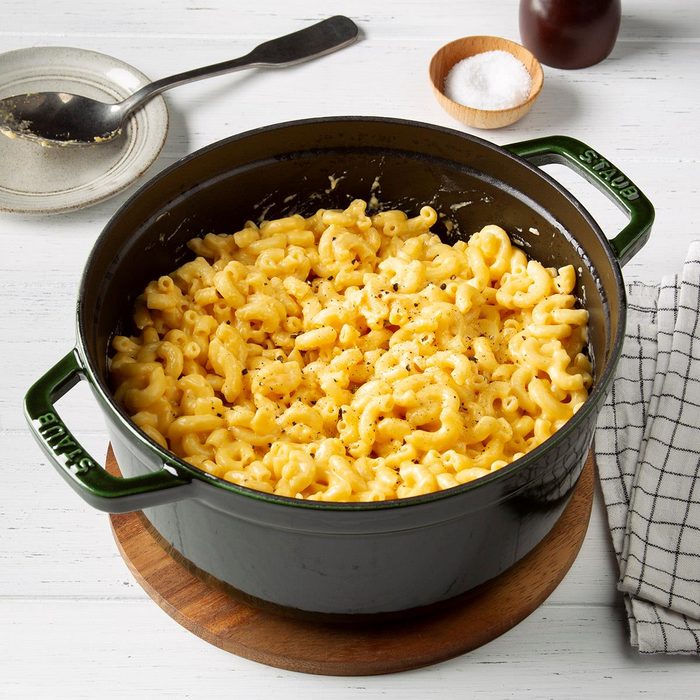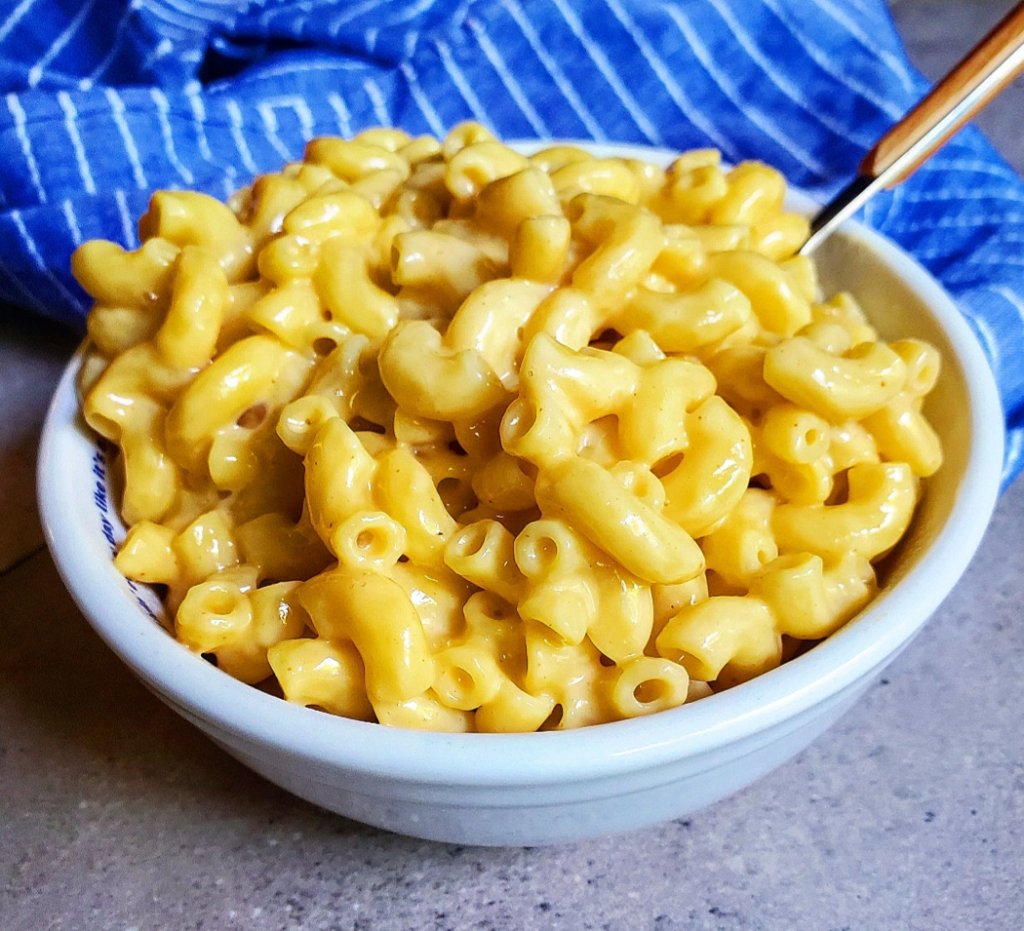One-Pot Mac and Cheese: A Creamy, Cheesy Symphony in a Single Pan

Mac and cheese. The very words conjure images of comforting warmth, gooey cheese pulls, and a nostalgic embrace of childhood favorites. This classic dish, a staple of American cuisine, has evolved beyond its humble beginnings, transcending simple boxed mixes to become a canvas for culinary creativity. While the traditional stovetop or baked versions hold a special place in our hearts, a modern marvel has emerged: the one-pot mac and cheese. This streamlined approach simplifies the process, reduces cleanup, and surprisingly, delivers a result that rivals its more elaborate counterparts. This article delves into the art of crafting the perfect one-pot mac and cheese, exploring variations, troubleshooting common issues, and ultimately, celebrating the delicious simplicity of this culinary shortcut.
The Allure of One-Pot Cooking:
The beauty of one-pot cooking lies in its efficiency. Instead of juggling multiple pots and pans, potentially creating a kitchen resembling a culinary battlefield, the entire process unfolds within a single vessel. This minimizes both cooking time and cleanup, a significant advantage for busy weeknights or those who prefer a less involved cooking experience. For the one-pot mac and cheese, this translates to fewer dishes to wash, less chance of burning a sauce, and a more streamlined workflow that allows for greater focus on the flavor profile.
The Science Behind the Creamy Perfection:
Achieving that signature creamy texture in one-pot mac and cheese hinges on a few key elements:
-
The Right Pasta: Elbow macaroni is a classic choice, its shape perfectly capturing the creamy cheese sauce. However, other short pasta shapes like shells, cavatappi, or even rotini can work equally well. Avoid long pasta like spaghetti, as it can become difficult to coat evenly in the sauce.

The Power of the Starch: The pasta itself releases starch as it cooks. This starch acts as a natural thickener for the cheese sauce, contributing to its creamy consistency. Overcooking the pasta can lead to a mushy texture, while undercooking will result in a less creamy sauce. Finding the perfect balance is key.
-
Cheese Selection: A Symphony of Flavors: The cheese is the undisputed star of the show. A blend of cheeses often yields the best results, balancing sharpness, creaminess, and richness. Cheddar is a classic choice, providing a sharp, tangy flavor. Adding Gruyère or Fontina contributes a nutty, creamy element. A touch of Parmesan adds a salty, umami depth. Experimenting with different cheese combinations is encouraged – the possibilities are endless!
-
Milk and Butter: The Creamy Base: A combination of milk and butter forms the foundation of the cheese sauce. The butter adds richness and helps to emulsify the cheese, preventing it from becoming grainy. Whole milk is preferred for its higher fat content, resulting in a creamier sauce. However, you can substitute with 2% or even skim milk, though the resulting sauce might be slightly thinner.
-
Flour: The Thickening Agent (Optional): While the pasta starch is the primary thickening agent, a small amount of flour can be added to the milk and butter mixture to create a roux. This roux helps to further thicken the sauce and create a smoother, more velvety texture. However, it’s not strictly necessary, especially if you’re using a higher-starch pasta.


A Step-by-Step Guide to One-Pot Mac and Cheese Bliss:
This recipe provides a framework; feel free to adapt it to your preferences and available ingredients.
Ingredients:
- 1 pound elbow macaroni
- 6 cups milk (whole milk recommended)
- 1/2 cup butter
- 1/4 cup all-purpose flour (optional)
- 2 cups shredded sharp cheddar cheese
- 1 cup shredded Gruyère cheese
- 1/2 cup grated Parmesan cheese
- 1 teaspoon salt
- 1/2 teaspoon black pepper
- 1/4 teaspoon garlic powder
- 1/4 teaspoon onion powder
- Pinch of cayenne pepper (optional, for a touch of heat)
Instructions:
- Combine Ingredients: In a large, heavy-bottomed pot or Dutch oven, combine the milk, butter, flour (if using), salt, pepper, garlic powder, onion powder, and cayenne pepper (if using). Stir well to ensure the flour is fully incorporated if using.
- Bring to a Simmer: Over medium heat, bring the mixture to a gentle simmer, stirring frequently to prevent sticking. The mixture will begin to thicken as it simmers.
- Add Pasta: Add the macaroni to the pot. Stir to ensure all the pasta is coated in the milk mixture.
- Cook the Pasta: Reduce the heat to low, cover the pot, and simmer for approximately 15-20 minutes, or until the pasta is cooked through but still firm al dente. Stir occasionally to prevent sticking. Check for doneness frequently, as cooking times can vary depending on the pasta brand and your stovetop.
- Stir in Cheese: Remove the pot from the heat. Gradually add the shredded cheeses, stirring continuously until the cheese is completely melted and the sauce is smooth and creamy. If the sauce is too thick, add a splash of milk to thin it out.
- Serve and Enjoy: Serve immediately. Garnish with extra cheese, breadcrumbs, or chopped chives, if desired.
Variations and Tweaks:
The beauty of one-pot mac and cheese lies in its adaptability. Feel free to experiment with different variations:
- Spicy Mac and Cheese: Add a pinch of red pepper flakes or a dash of your favorite hot sauce for a spicy kick.
- Bacon Mac and Cheese: Crumble cooked bacon into the cheese sauce for a smoky, savory twist.
- Vegetable Mac and Cheese: Add sautéed vegetables like broccoli, cauliflower, or peas to the pot along with the pasta for a healthier and more nutritious meal.
- Buffalo Chicken Mac and Cheese: Incorporate shredded buffalo chicken for a flavorful and satisfying twist.
- Lobster Mac and Cheese: For a luxurious indulgence, add cooked lobster meat to the cheese sauce.
Troubleshooting Common Issues:
- Grainy Cheese Sauce: This usually occurs when the cheese is added too quickly or the sauce is too hot. Add the cheese gradually, stirring constantly, and reduce the heat if necessary.
- Too Thick Sauce: Add a splash of milk or cream to thin it out.
- Too Thin Sauce: Simmer the sauce for a few more minutes, or add a cornstarch slurry (1 tablespoon cornstarch mixed with 2 tablespoons cold water) to thicken it.
- Burnt Sauce: Keep the heat low and stir frequently to prevent burning.
Conclusion:
One-pot mac and cheese is more than just a convenient cooking method; it’s a testament to the power of simplicity and deliciousness. By mastering the fundamentals of this recipe and experimenting with different variations, you can create a creamy, cheesy masterpiece that will delight your taste buds and impress your guests. So, ditch the multiple pans, embrace the one-pot wonder, and savor the creamy, cheesy symphony that awaits. The ease of preparation, combined with the rich, comforting flavors, makes one-pot mac and cheese a true culinary gem, perfect for any occasion. Enjoy!

Video tentang One-Pot Mac and Cheese: A Creamy, Cheesy Symphony in a Single Pan
Penutup
Therefore, we hope this article has provided valuable insights on One-Pot Mac and Cheese: A Creamy, Cheesy Symphony in a Single Pan. We hope you found this article informative and helpful. See you in our next article!

